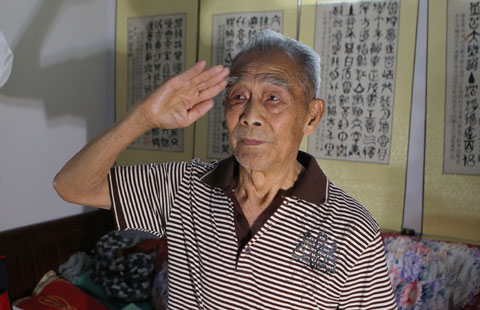Li pledges to rebuild more shantytowns this year
By ZHAO YINAN in Chifeng, Inner Mongolia (chinadaily.com.cn) Updated: 2014-03-27 15:57
|
 Premier Li Keqiang visited shanty houses in Chifeng, the most populous city in Inner Mongolia autonomous region on Thursday morning. [Photo by Liu Zhen/China News Service] |
Premier Li Keqiang has pledged to rebuild more of the country's shantytowns this year as part of planned urbanization and efforts to improve people's living conditions.
Li stressed his determination to transform the damp and unsanitary living conditions of nearly 100 million people during his visit on Thursday to Chifeng, the most populous city in the Inner Mongolia autonomous region.
"We can't let our people live in shanty houses while building skyscrapers on the other side of the road," he told residents of the Tienan community. "It will be a difficult project, unless we're in it together."
The community, an area of 0.4 square kilometers in downtown Chifeng, consists of 794 households with about 2,373 residents. It was built in the early 1980s as temporary accommodation for railway employees, but most of the residents have not been able to afford new houses and move out of the area, said Zhao Yurong, head of the urban neighborhood committee.
Paths made of earth and coke residue led the premier's way to local households.
"It is a common scene here that families with two or even three generations still live under one roof, and their only house is merely about 30 square meters," Zhao said.
Zhou Jingyou, 51, has lived in the community for 20 years. His semi-underground house has a small yard of about 3 sq m, where Zhou has set up a kitchen, and his wife uses the remainder of the yard to raise rabbits and dry laundry. Inside, a coal stove burns in the living room, with a chimney projecting through the window.
During the rainy season, torrential waters can flow down into these semi-underground houses, Zhou said.
China has about 100 million urban residents living in shantytowns, and Li has promised to build at least 10 million homes for them by 2018.
|
 |
 |
| New urbanization plan ambitious: Analysts | Urbanization slows, raising challenges |
- More female officials caught in corruption
- Whampoa veterans recorded with glory
- Police bust 9 terrorist groups in Xinjiang
- Knife-wielding attackers seized in Xinjiang
- New regulation leads to drop in petitioned cases
- Hunan plant shut as probe into lead poisoning begins
- Police boost efforts to combat gambling
- Project offers jobs openings to legal experts
- Experts: Dog meat festival 'illegal'
- Nation looks to upgrade
pipeline networks






